The most stylish anarchist Theodosius Shchus
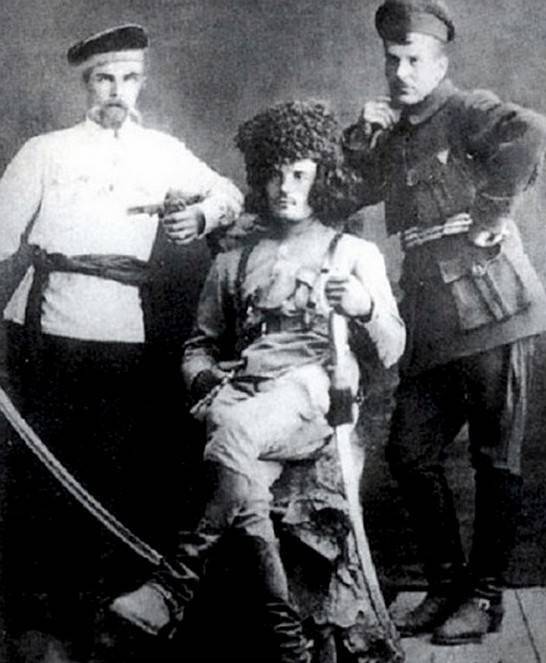
Most recently, looking through the comments on my article "Revolutionary General Lavr Kornilov", I saw photographs of Feodosy Shchus, an anarchist sailor, who is often called the “right hand” of Nestor Makhno. And suddenly I was struck by an electric shock, because I remembered the cult Soviet film "The Elusive Avengers" and its heroes - Danka and Ksanka. Which, if you call them officially, in an adult way - Daniil Shchus and Oksana Shchus.
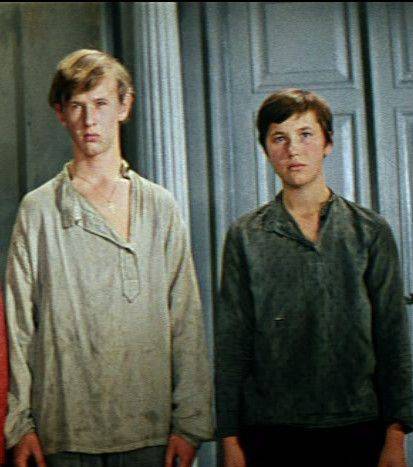
The surname Shchus, you see, is very rare - not Ivanov, Petrov or Sidorov, and not even Nalivaiko. It's hard to believe in a coincidence. But even this is not enough. In order for the hint to become completely transparent, the filmmakers made their Shchus - by whom? That's right, a sailor. The first film is about the "elusive" and begins with the scene of his execution:
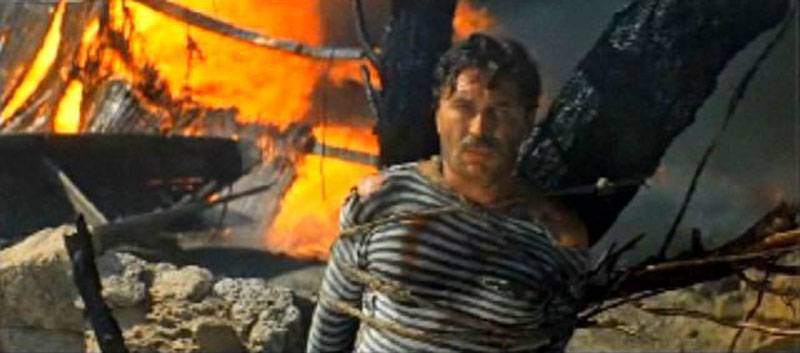
That is, with a high degree of probability it can be assumed that two of the four main characters of the films about the "elusive avengers", as conceived by one of the authors, were the children of the second person in the army of Old Man Makhno.
And it becomes very interesting: who in 1966 put such "bomb" "Easter eggs" into the plot? Directed by Edmond Keosayan? Or Sergei Yermolinsky, who wrote the script with Keosayan? And who, as they say, in the process of work studied many documents on stories Makhnovist movement.
I decided to look for materials on the history of the film and found out that the main opponent of the legendary four was to become Makhno's father - as in the original source, P. Blyakhin's story "The Red Devils". And the surname of Danka, Ksanka and their executed father in the original version was Nedolya. By the way, in the song of the Lyube group, it is precisely “Old Man Makhno looks out the window”, where it is dark and “the dead with braids stand along the roads - the work of the red devils”.
But in the end, Nestor Makhno was replaced by Burnash, who looks like another real-life ataman - N. Grigoriev, who controlled exactly the territory where the film takes place.
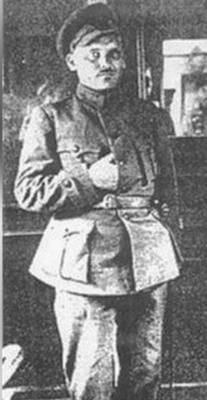
Another famous sailor fought against Grigoriev - Zheleznyak (A. Zheleznyakov), famous for the phrase "The guard is tired":
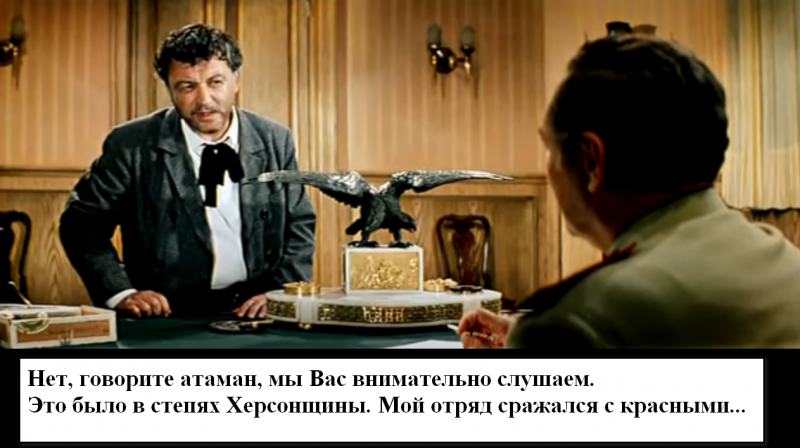
Anatoly Zheleznyakov died on the armored train he commanded - in a battle with the White Guards, and the authors of the quoted song (it was written in 1936) again blamed everything on Makhno, who was not even close there. Meanwhile, Nestor accused Burnash's prototype, N. Grigoriev, of having connections with the Whites (two officers with incriminating letters were intercepted) and of organizing Jewish pogroms - but Makhno did not forgive either one or the other. And on the orders of the "father" Grigoriev was killed.
And here in 1966, the cinematic Danka and Ksanka suddenly changed their minds about fighting Makhno and acquired the name of his closest associate. And only one of the songs reminds of the original idea, in it for the only time in the entire film, the famous “father” is mentioned - as they say, neither to the village nor to the city: they fought with Burnash-Grigoriev and Sidor Lyuty (apparently, the “independent” ), but for some reason Nestor Ivanovich interferes:
May the devil Makhno stand in the way.
Okay, let's leave the question of the origin of Danka and Ksanka Shchusey open. Let each of the readers decide for himself who, at the will of the scriptwriters, was shot in the first film about the "elusive" - the "real" Theodosius Shchus or his namesake.
But let's talk about this interesting man.
Origin and early years
The most stylish of the anarchists was born on March 25, 1893 in the village of Velikomikhailovka, Aleksandrovsky district, Yekaterinoslav province (in the USSR, Yekaterinoslav was renamed Dnepropetrovsk). Sometimes you can read that the native village of the hero of the article was called Dibrov - this is the local unofficial name given to him by the "dibrov", that is, oak forests that grew around. It was a very large settlement (more than a thousand households), which had a brick and tile factory, three steam mills, two steam oil mills, a postal and telephone exchange.
At baptism, the boy received the name Theodosius, but he is often called Fedos, sometimes even Fedor. The parents of the future anarchist sailor were rather poor peasants of Cossack origin.
In 1915, Feodosy Yustinovich Shchus was drafted into the army and ended up on the Black Sea navy. He always said that he served on the battleship "John Chrysostom", however, this information is not confirmed by documents: apparently, Shchus got on some insignificant ship and subsequently decided that it would still be more solid to wear a peakless cap of a battleship, and not some small "vessel".
But he was definitely a sailor, and not one of the last. He was a well-known martial arts master in the Navy, mastered the techniques of "French wrestling" (now - "Greco-Roman wrestling") and jiu-jitsu, and was engaged in boxing. He boasted that he knew some special secret grip, with which he could knock down and strangle any opponent.
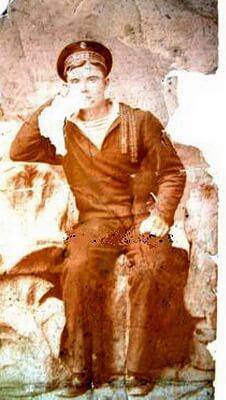
He was carried away by the ideas of anarchism, after the February Revolution of 1917 he joined a detachment of revolutionary sailors, but soon returned home. Perhaps, under more favorable circumstances, it was Shchus, with his ambitions and charisma, who would become the most famous and authoritative ataman of Little Russia. However, an even more passionate leader was found - the famous Nestor Makhno. This frail and unsightly little man (who, due to his small stature, really did not like to be photographed while standing) eclipsed and suppressed everyone. M. Weller wrote about him this way:
None of the people surrounding Makhno dared to encroach on his power.
People's leader of Gulyaipole
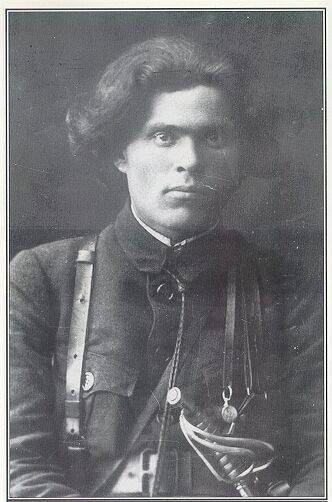
Nestor Ivanovich Makhno was a fellow countryman of Shchus (born in the same Yekaterinoslav province) and was 5 years older than him. He became a member of the "Peasant Group" of the anarcho-communists, participated in expropriations, was sentenced to death for the murder of two guards, but then it was replaced with indefinite hard labor.
In the cell of the Butyrka prison, Makhno met the "Bessarabian Robin Hood" - Grigory Kotovsky, as well as the anarchist Pyotr Arshinov, who had a great influence on him. Arshinov later wrote that penal servitude became the only school for Makhno where he learned historical and political knowledge. The friendship between Makhno and Arshinov went so far that in March 1919 the teacher came to a student in Gulyaipole and became the editor of the newspapers Path to Freedom and Insurgent.
As a political prisoner, Makhno was released after the February Revolution. He went to Kotovsky, but he himself was a very strong leader, he was not going to cede the championship to anyone, and therefore Nestor returned to his homeland. Here things went very well for him: he was elected chairman of the Council of Workers' and Peasants' Deputies, and also headed the local anarchist cell. He created his own "Black Guard", forced the manufacturers to raise the wages of the workers, took away the land from the landowners and distributed it to the peasants - two months before the Bolshevik decree. He made his motto:
And Makhno was then 28 years old, and at 45 he would already die in Paris.
Around this time - between the two revolutions of 1917 - Feodosy Shchus met Nestor Makhno. But he preferred to organize his own detachment - from fellow countrymen, on whom he made an indelible impression with his brave appearance and incredible "military uniform", at the sight of which modern couturiers should become depressed, and pop singers like Kirkorov should weep with envy.
Shchus wore a German-style hussar dolman, on his head - the invariable peakless cap of the battleship "John Chrysostom", on his belt - an expensive saber and colt, on his neck - a Caucasian dagger.
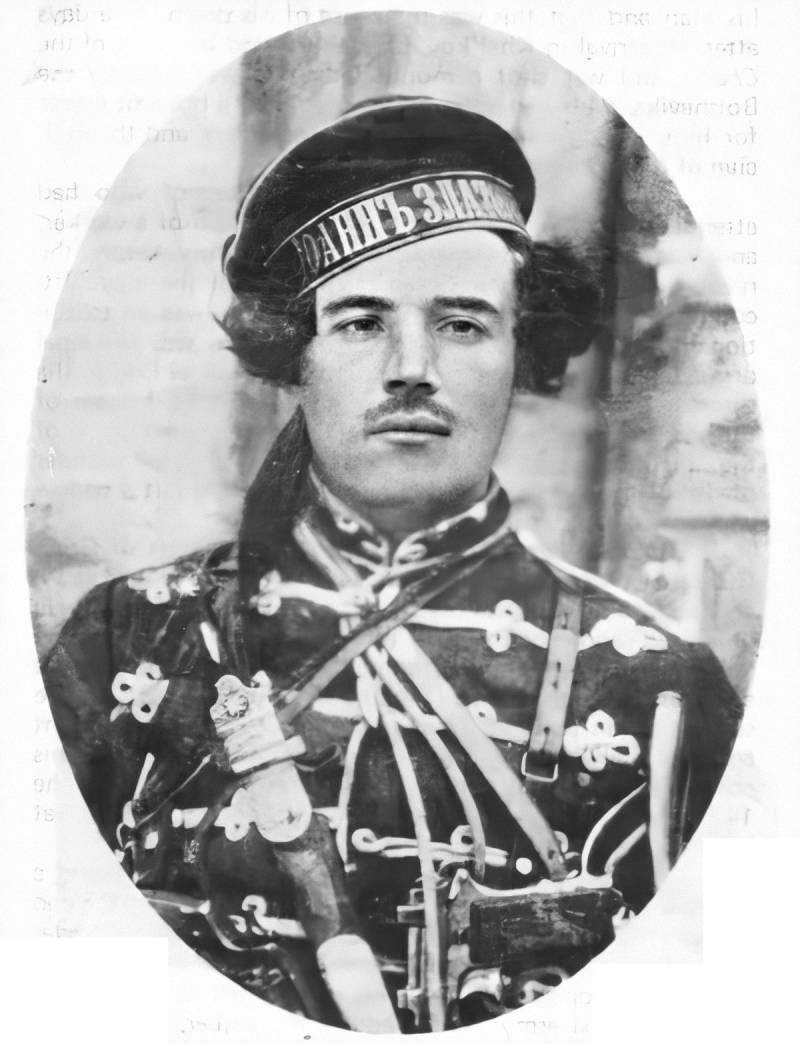
Meanwhile, the Central Council actually surrendered Ukraine to Germany and Austria-Hungary. Makhno with his "Black Guard" retreated to the territory controlled by the Bolsheviks. Here his fighters were disarmed, and Nestor himself went to Moscow, where he met with Kropotkin, Bukharin, Sverdlov and Lenin. Shchus with his detachment quite successfully waged a guerrilla war.
Makhno returned to Gulyai-Pole alone, with a revolver and two bombs. And very soon he was already at the head of a new army, the number of which was up to 20 thousand permanent fighters and about 30 thousand reserve ones. Several million people lived in the territory controlled by him.
By the way, it is Makhno who is considered the inventor of the famous cart, in the best of times the number of carts in his army reached 700.
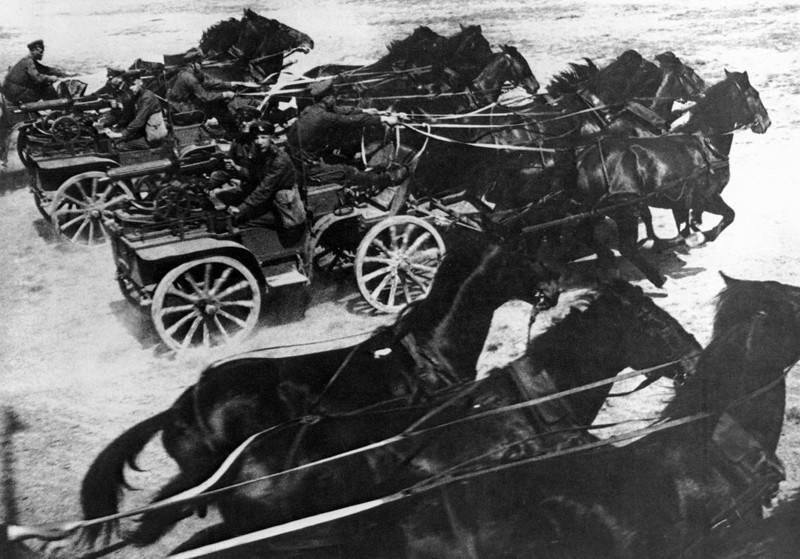
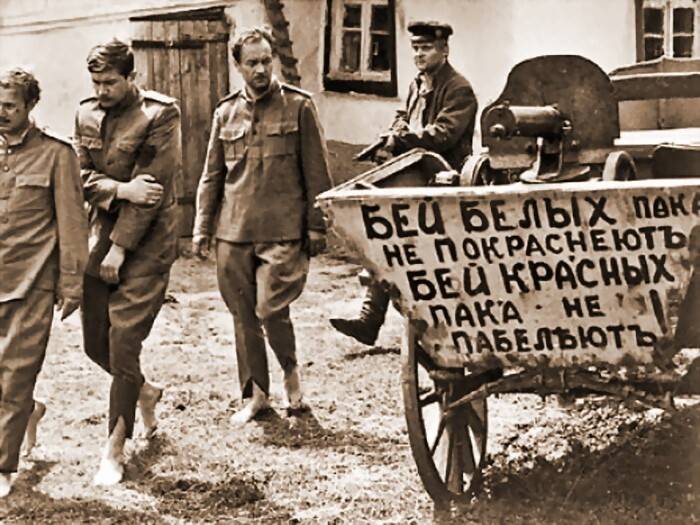
Makhno categorically refused to cooperate with the Whites, and Wrangel's emissary was shot on his orders. He said in 1919:
Makhno became an ally of the Reds three times - and three times they declared them outlaws. He received the Order of the Red Banner number 4. Together with Blucher and Frunze, the Makhnovists stormed the Crimea and on November 8, 1920 forded the Sivash Bay. They were led by Semyon Karetnikov (Karetnik), one of the liquidators of Ataman Grigoriev.
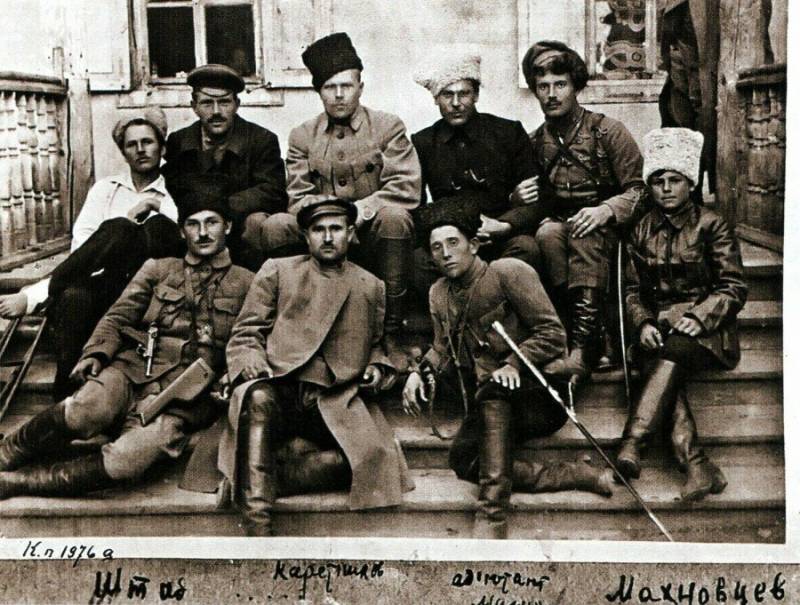
Then they decided to send the Makhnovists to the Caucasus, they refused and on November 29 they again crossed the Sivash - already back to Tavria, fleeing from the Red Army units pursuing them. It all ended with the flight from the Bolsheviks to the territory of Romania - in August 1921.
But let's go back to 1918.
New meeting of Nestor Makhno and Theodosius Shchus
So, in September 1918, Makhno, with a still small detachment, approached Velikomikhaylovka. Local residents told him that Theodosius Shchus was in the forest with his people. Let's listen to Nestor's story:
- Comrade Makhno, it's me, Shchus.
I went straight to the clearing, to the detachment. He greeted both the detachment and Shchus himself. Only now, looking at Shchus, dressed in a German hussar uniform, tightly fitting his handsome and slender figure, and armed to the teeth, I recognized in him that very handsome sailor Shchus, whom I knew before.
Apparently, Nestor Makhno Theodosius Shchus used to know such a “handsome sailor”:
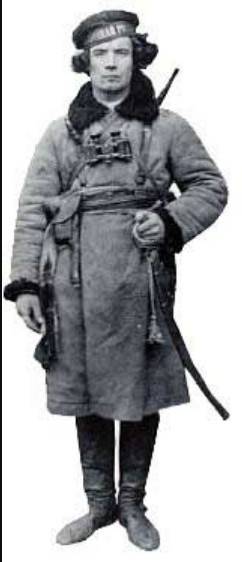
Let's continue the quote:
Then I posed a question to T. Shushu:
- What have you done with this detachment so far, Comrade Shchus, and what do you intend to do in the future?
The answer was short:
Until now, I have attacked returning landowners and destroyed them and all their guards, German and Austrian soldiers.
- And how do you feel about the hetman's varta? I asked him.
- I usually overclocked the Warta.
- But only? I asked him.
- I do not foresee any other work yet, because there are still a lot of reptiles that I destroy.
In these brief phrases of Comrade Shchus, everything was clear and understandable to me.
Shchus and his people joined Makhno's army - at first as an independent unit: at first, the "headquarters of Makhno and Shchus" appeared in the documents. But already on September 30, 1918, it was Makhno who led the operation of the united detachments, during which a large Austro-German detachment was defeated - many times superior to their forces (Shus then, after listening to Nestor's plan, called him "crazy"). After that, Theodosius unconditionally recognized the primacy of Makhno, and he was the first to call him "dad".
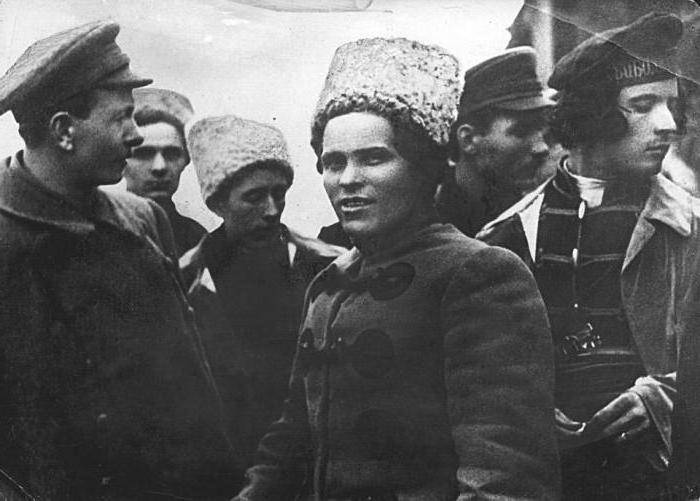
Pyotr Arshinov reports in his History of the Makhnovist Movement:
This was Makhno's first major success after his return to Little Russia. Here is how he himself describes the consequences of this victory:
The next morning, peasants began to arrive from all over. The ranks of our armed forces began to replenish with incredible speed. Moreover, they were replenished by peasants who were ready to leave their district at any moment, if necessary, and go with us anywhere ...
And now the word “Batko”, already attached to my surname, did not leave the lips of old and small peasants, townsfolk and revolutionary detachments. It seemed to me personally both strange and inconvenient to hear peasants and rebels address me instead of the usual “comrade Makhno”, “Father Makhno”, and sometimes “comrade Batko Makhno”. But the epithet "Batko", against my will, stuck to my surname.
In June 2018, a monument dedicated to the uniting of the Makhno and Shchus detachments was unveiled in the village of Velikomikhaylovka.
Theodosius Shchus in the army of Nestor Makhno
I must say that Shchus was not the only sailor in Makhno's army.
A certain Dermendzhi, a native of Moldova, once served as a telegraph operator on the famous battleship Potemkin. He returned to Russia from emigration in 1917, organizing his own detachment, which, according to various estimates, consisted of 200 to 400 people. At Makhno, he became the head of the communications service and the commander of the telegraph battalion. He was killed in the summer of 1921.
But back to the hero of the article.
At first, Theodosius Shchus became the commander of cavalry units, but then moved to staff work.
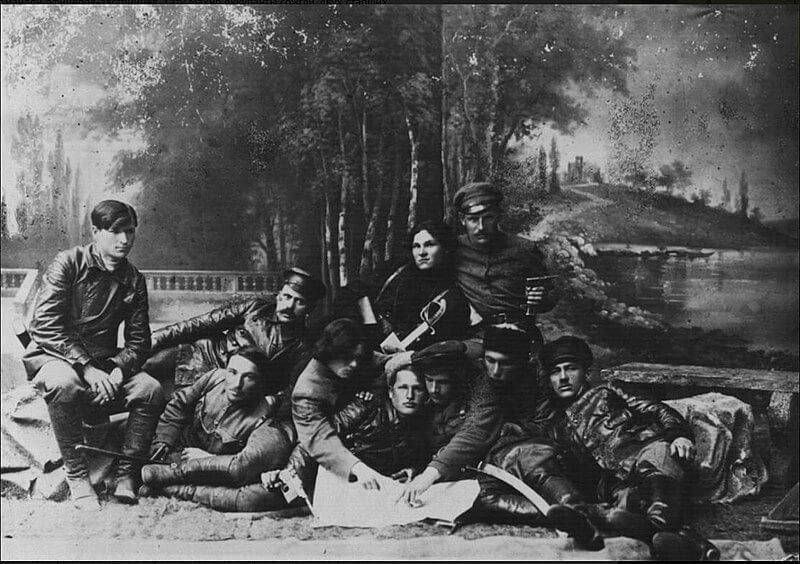
His authority among the Makhnovists was very high, they say that he was the only one who could argue with Makhno. At peasant congresses, Makhno was invariably elected chairman, Shchus - his "comrade", that is, deputy.
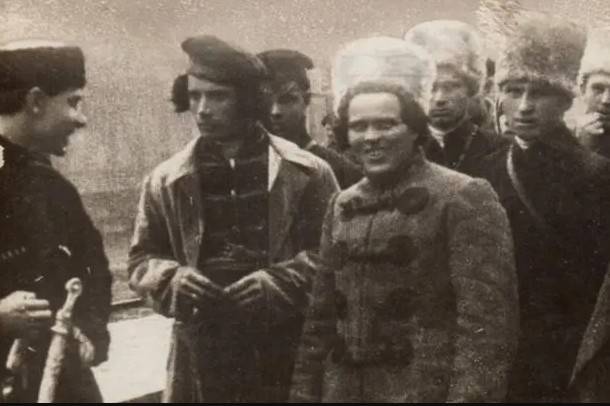
It is also reported about the huge success that Shchus enjoyed with women. He also wrote poems and songs, one of them contained the following words:
Beware, Budyonny, father's blades!
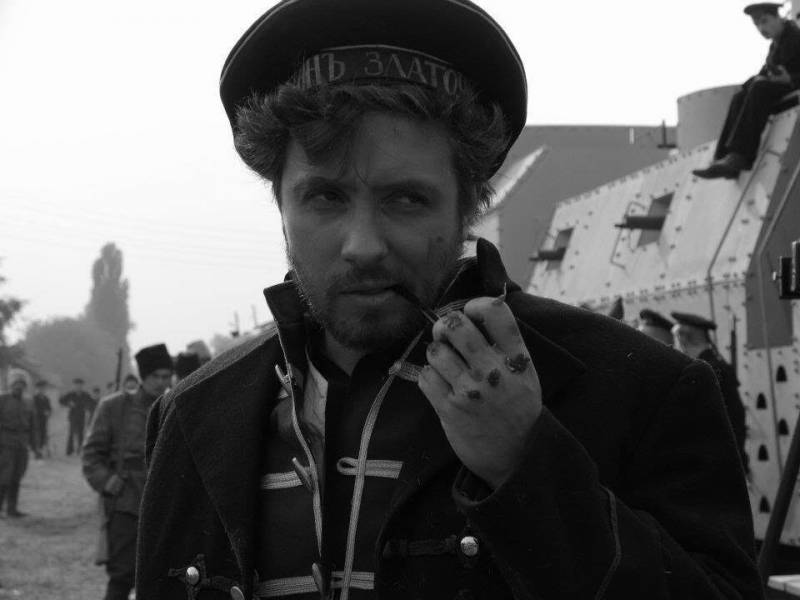
In February 1919, Makhno made an alliance with the Bolsheviks, and his detachments, as the 3rd brigade, became part of the 1st Zadneprovskaya Ukrainian Soviet division of Pavel Dybenko.
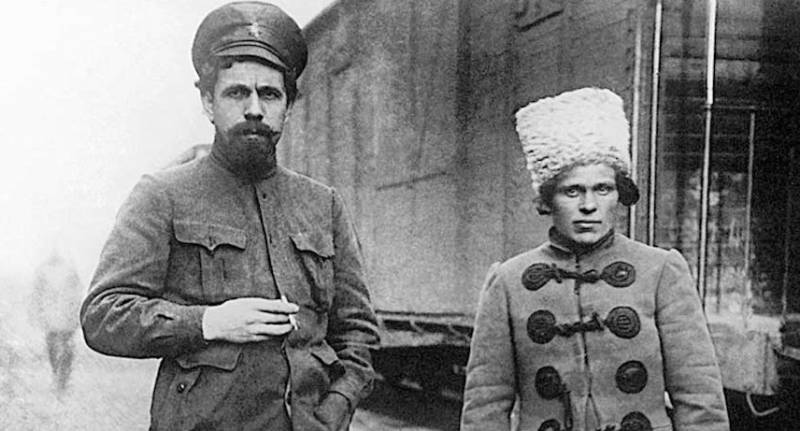
Theodosius Shchus then, remaining a member of the headquarters, became the commander of the Spartak armored train, which forced the French squadron to leave Mariupol with his fire.
Death of Theodosius Shchus
There are two versions of the death of the hero of our article.
According to the first, long recognized as unreliable, Makhno shot him because he allegedly offered to surrender to the units of the Red Army pursuing the rebel army.
However, in fact, Theodosius died on June 13, 1921 in a battle against the 8th Cavalry Division of the Red Cossacks of Mikhail Demichev - near the village of Nedrigailov, which is located on the territory of the Sumy region of modern Ukraine.
It was this defeat that became fatal for the remnants of the army of Nestor Makhno, who now fled to the Romanian border. 78 people arrived.
The seriously wounded Nestor Makhno was transferred to the right bank of the Dniester by another very interesting character - Lev Zadov (Zodov, Zinkovsky), whom we will probably talk about in the next article.
Information